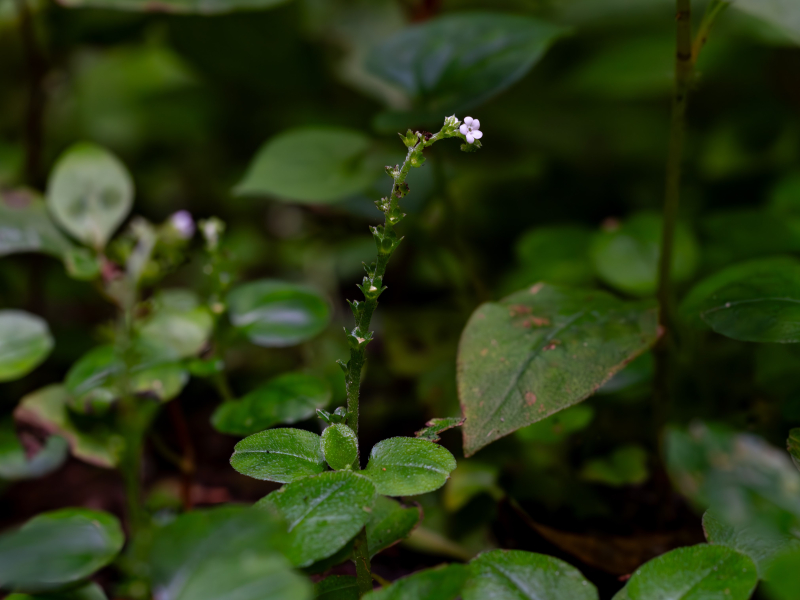フィールド日記
2024年07月
2024.07.30
ミズタビラコ
ミズタビラコが咲いています。水辺に生える多年草です。ムラサキ科に属し、近縁のキュウリグサと同様に花びらの根元にはふくらんだ部分があります。近隣の神奈川県や愛知県では絶滅が危惧されています。

2024.07.26
ミツバ
ミツバが咲いています。葉にさわやかな香りがあり、栽培されたものが野菜としてスーパーなどで売られています。野生のものは山地の林縁などで普通に見られます。

2024.07.23
タケニグサ
タケニグサが咲いています。2mほどに成長する大型の多年草です。花は花弁がなく、多数の雄しべが目立ちます。和名は茎が中空で竹に似ていることに由来するという説があります。

2024.07.19
ショクヨウホオズキ
ショクヨウホオズキが咲いています。北アメリカ原産の帰化植物で、名前の通り、食用になるホオズキです。観賞用のホオズキと同じように、花のあと、がくが肥大し、果実を包みます。栽培されていたものが逃げ出し、野生化しているようです。

2024.07.16
ネムノキ
ネムノキが咲いています。マメ科の落葉高木で、山地の林縁や土手などでよく見られます。花は多数の赤い長い雄しべがよく目立ちます。和名は眠の木の意味で、夜になると葉が閉じることに由来します。

2024.07.12
オオバノトンボソウ
オオバノトンボソウが咲いています。やや乾燥気味の林床に生えるランの一種です。キャンパス内では林縁で見られます。花は黄緑色で、茎に著しい稜があることが特徴です。

2024.07.09
コクラン
コクランが咲いています。複数の県で絶滅危惧種に指定されているランの一種です。和名は黒っぽい色の花をつけることに由来します。

2024.07.05
ツチアケビ
ツチアケビが咲いています。ランの仲間で、光合成をせずに、栄養を完全に菌類に依存しています。和名は、秋に小さいアケビの実のような赤い果実をつけることが由来です。キャンパス内では毎年同じ場所で開花するわけではなく、数年に1度くらいの頻度で見ることができます。
2024.07.02
ヒトツバハギ
ヒトツバハギが咲いています。林縁などに生える落葉低木です。写真は雄株で、葉の付け根に花を多数の雄花をつけています。ハギと名前がついていますが、マメ科のハギ(萩)の仲間ではなく、コミカンソウ科に属する別の仲間です。静岡県のレッドリストでは絶滅危惧ⅠB類に分類されています。

- 1 / 1

















